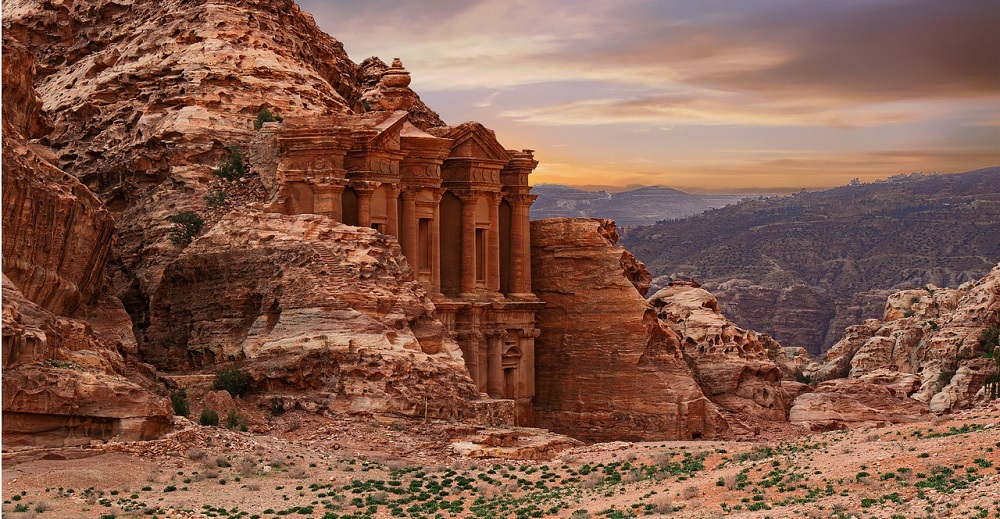
To know where we’re going, it’s important to know where we came from. One of the best ways to gain insight to our past is to experience significant historical sites.
Sure, every place has its own significance, but there are a few that have been known to change our course and culture all on their own. For an undoubtedly interesting, educational time, check out our “best of” historical site tours in the world!
Masada
Hours of Operation:
Summertime: every day from 8:00 am – 5:00 pm
Winter: 8:00 am – 4:00 pm
If you’re in Israel, you can’t miss seeing this symbol of the ancient kingdom of Israel, and learn of its destruction. Masada is a UNESCO World Heritage Site in the form of a fortress located on the very top of a plateau overlooking the Dead Sea. It’s a living reminder of what heroism can accomplish, and many Israeli soldiers are sworn in here because of its importance.
At the top, you’ll encounter ruins of the ancient palace dating back to 35 BC! Despite being so old, the remains are quite well-preserved, with many portions being reconstructed to pay homage to the site’s history. Take one of these Masada tours from Jerusalem, and you’ll have an expert guide and round-trip transportation to take care of you.
Most Popular Sites at Masada:
- Masada Museum: This great collection of artifacts tells a comprehensive story of the site and its place in Jewish history.
- Paths to the Summit: There’s a cable car available, but taking the main trails offer incredible views and quite the workout!
- Northern Palace: This is the uppermost portion where Herod’s residential apartments sit.
- Baths: This bathhouse features a courtyard and a changing room complete with black-and-white tiles, the warm room, cold bath, and hot bath. The under-floor heating system is very impressive!
- Synagogue: Sitting right up against the fortress walls, this is one of the oldest synagogues in the world.
- Byzantine Church: The remains of this church were constructed by Byzantine monks during the 5th
- Western palace: One of the most beautiful areas of Masada.
Tips for Visiting Masada:
- Cable Cars Are Your Friend: Unless you fancy a grueling hike to start things off, we recommend you take the cable car. It’s quick, easy, and lets you conserve your energy for looking around the top.
- Plan Your Visit: Fall and winter offer milder weather and fewer crowds. April and May months are also quite nice, with less people. However, try to avoid July and August if you can. It’s scorching hot, and peak tourist season with long lines!
- Visibility Could Be An Issue: Sometimes, the area is so hazy you may not even be able to get views of the Dead Sea.
- There Are 2 Entrances: The West Entrance can only be accessed from Arad and you’ll have to climb the Roman Path. The East Entrance is accessible from Highway 90 and the Dead Sea area, and you can use the cable car, Snake Path, and access the museum and Visitor’s Center.
Petra
Summertime: Daily from 6:00 am – 6:00 pm
Winter: Daily from 6:00 am – 4:00 pm

Located around 150 miles from Jerusalem, Petra may seem like an otherworldly, highly-Instagrammable place. However, it’s so much more than that. This ancient city dates back to the 4th-century BC, when it was once a powerful metropolis. Due to its proximity to Damascus, Syria, and the Red Sea, it was the perfect center of maritime trade.
It may seem difficult to create a thriving city in the middle of a harsh, barren desert. So, how were its people able to grow crops and just survive? The Nabataeans were masters at surviving in these conditions, thanks to their expert skills at collecting and distributing water.
They then carved intricate, beautiful structures into the sandstone cliffs. As if that wasn’t amazing enough, they then covered the rose-colored rock with stucco and bright paint.
The best way to experience this incredible ancient wonder of the world is with one of these Petra tours from Jerusalem. They take care of your transportation and will lead you through Petra, as well as other fascinating archaeological sites.
Most Popular Sites at Petra:
- Bab As-Siq: This trail starts from the ticket booth and runs to the Siq. Along the way, there are various monuments to see, like the Obelisk Tomb.
- Siq: This immense gorge stands high above your head as you make your way to the famous Treasury.
- The Treasury: This is the view that brings so many here. Completely carved into the side of the sandstone mountains, this stunning structure was originally made as a tomb for King Aretas III.
- The Royal Tombs: These facades are absolutely amazing, and you can explore some of them.
- The Monastery: This is just as impressive as the Treasury, though you do have to do a 20-minute hike to get there.
- Colonnaded Street: This is what is left from when the Romans took over Petra in 106 AD. As we know very well, Romans were insane architects, and the columns are a small example of that.
Tips for Visiting Petra:
- Be Prepared for People Approaching You: As you walk through the Siq, there will be a lot of Jordanians and Bedouins who want to “take you up the rocks for a better view”. This is no doubt an amazing view, but it’s very It’s worth it if you’re fine with heights!
- Go Beyond the Treasury: While it’s definitely the “main attraction” for most visitors, there’s so much more to see!
- Avoid Animal Tourism: Aside from walking and hiking, there are the options of riding a donkey, camel, a horse and carriage, or a golf buggy. The latter is far more efficient, and doesn’t cause any discomfort to the animals who already look absolutely exhausted from toughing it out in the blistering sun.
- Be Prepared to Walk: If you want to see the Monastery, plan to walk for at least 2 hours. Some of the structures are high up, so you’ll need to climb up to see them.
Delphi
Hours of Operation:
Daily: 8:30 am to 3:30 pm
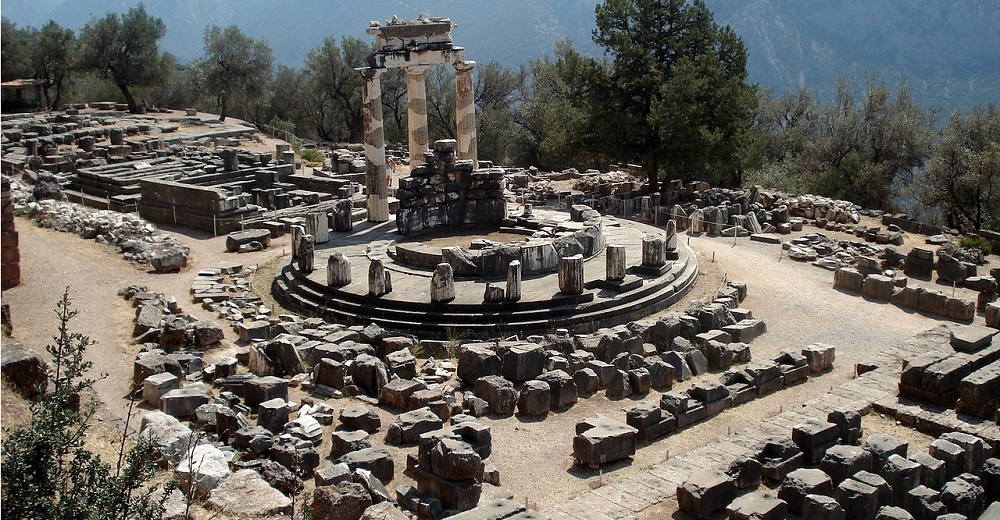
First founded in 1903, the Delphi Archaeological Museum quickly became one of the most popular in all of Greece. It all started when the head of the French archaeological expedition, Theophile Homolle, wanted to put the artefacts found “in context”.
With its enormous collection and quality of artefacts, by the 1930s, it became so popular it needed to be expanded upon. After going through WWII and the Greek civil war in the 1950s, it finally was opened in 1961 and has since been one of the top destinations in the country for learning about Greek history.
Covering over a thousand years, the exhibits inside date from the Late Helladic period to the early Byzantine era. With 14 rooms on 2 levels, it’s a fantastic display of statues, pieces of architecture, art, and more with one these Delphi tours from Athens.
Most Popular Pieces:
- Sphinx of Naxos
- Treasury of The Siphnians
- Twins of Argos
- Chryselephantine Objects
- Delphic Hymns to Apollo
- Cyclix of Apollo
- Dancers of Delphi
- Statue of Antinoos
- Charioteer
Tips for Visiting the Delphi Museum:
- Go After Delphi: You’ll want to head to the archaeological site of Delphi before the museum. This is because the crowds will start up a bit later in the day, so you can hopefully get there before they arrive.
- Dress Accordingly: It can get really hot and sunny, so make sure you bring sunscreen, sunglasses, and ideally something to shield your face. Also, try to wear shoes that are comfortable to wear on hilly terrain with rough stones.
Colosseum
House of Operation:
(Closing Changes Throughout the Year but Every Day, Opens at 8:30 am)
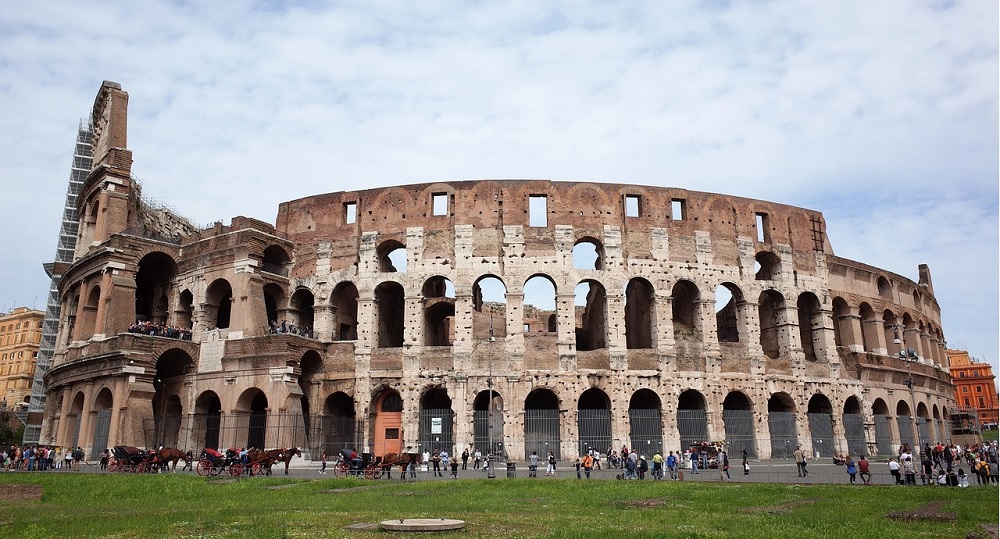
The Colosseum stands today as perhaps the most famous example of the Roman Empire’s sheer power, genius, and savageness. The massive stone amphitheater is the largest ever built in ancient times, and is still the biggest one standing, today. In fact, it could seat anywhere from around 50,000 to 80,000 spectators at one point in time.
Built as part of the efforts to revitalize Rome, emperor Vespasian wanted it to be used for entertainment purposes. They’d host sometimes-deadly gladiator fights, animal hunts, and mock naval battles. In 1349, a massive earthquake struck Rome and the Colosseum’s south side collapsed, giving it its look today.
While there are plenty of interesting things to see with just a general admission ticket, taking one of these Colosseum tours in Rome will offer you much more insight into its fascinating history!
Most Popular Sites at the Colosseum:
- The Base of The Colossal Statue of Nero
- The Arch of Constantine
- The Outer Ring
- Flavian Amphitheater Plaque
- Ludus Magnus
- The Cross
- The Gate of Death
- The Arena Floor
- The Underground
- Food Vendor Artifacts
- Second Floor Balcony
- The Third, Fourth, and Fifth Floors
Acropolis
Hours of Operation:
Every Day: 8:00 am – Sunset
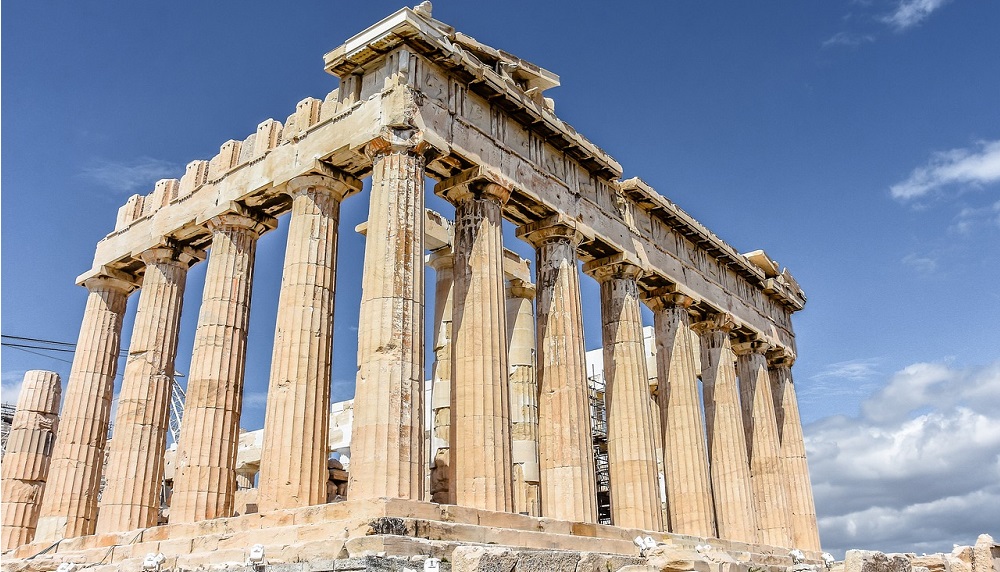
Originally built as a fortress and military base, the “high city” of the Acropolis is a symbol of the illustrious Greek saga. Sitting up on a limestone hill, the ancient citadel is one of the most incredible (and complete) architectural and historical complexes in the world to this day.
As art and thought thrived, many talented artists pushed the Athenian statesman, Pericles’ lofty plans underway. Inspired by the sculptor, Pheidias, they transformed what was once a regular, old hill into a striking monument that epitomizes Ancient Greece. Athena planted the first olive tree to found the city of Athens, and it’s here that you’ll find the Parthenon temple dedicated to the Goddess.
To enjoy the citadel in all its glory, complete with interesting stories and anecdotes, get yourself booked on a guided tour of the Acropolis.
Most Popular Sites to See at Acropolis:
- Porch of The Maidens
- Theater of Dionysus
- Flagpole on the Belvedere
- Stoa of Eumenes
- Ceremonial Sundays
- Odeon of Herodes Atticus
- Temple of Athena Nike
- Propylaea
- Erechtheion
- Parthenon
Tips for Visiting the Acropolis:
- Spring and Autumn Are Ideal: These are the cooler months, with smaller crowds. Winter isn’t bad either, but can generally get a bit cold and wet in December and January. July and August are the hottest months, and the heat and crowds can make it a bit more challenging to get through.
- Go as Early as Possible: This is to avoid the crowds and heat!
- Don’t Use the Main Entrance: There are 2 main entrances: one on Rovertou Galli, and one on Dionysiou Areopagitou. This entrance is less crowded and the lines tend to be a bit shorter.
- Buy Tickets in Advance: Or better yet, just book your guided tour in advance and skip the line!
- Free Entry: There are a few days per year where you can access the Acropolis for free: March 6th, April 18th, May 18th, the last weekend of September, October 28th, the first Sunday from November through March.
- Head to the Top First, Then Back: The Parthenon and other buildings on the top are the biggest tourist attractions, so try to hit those first and work your way back.
Pisa
Hours of Operation: (Change Almost Every Month)
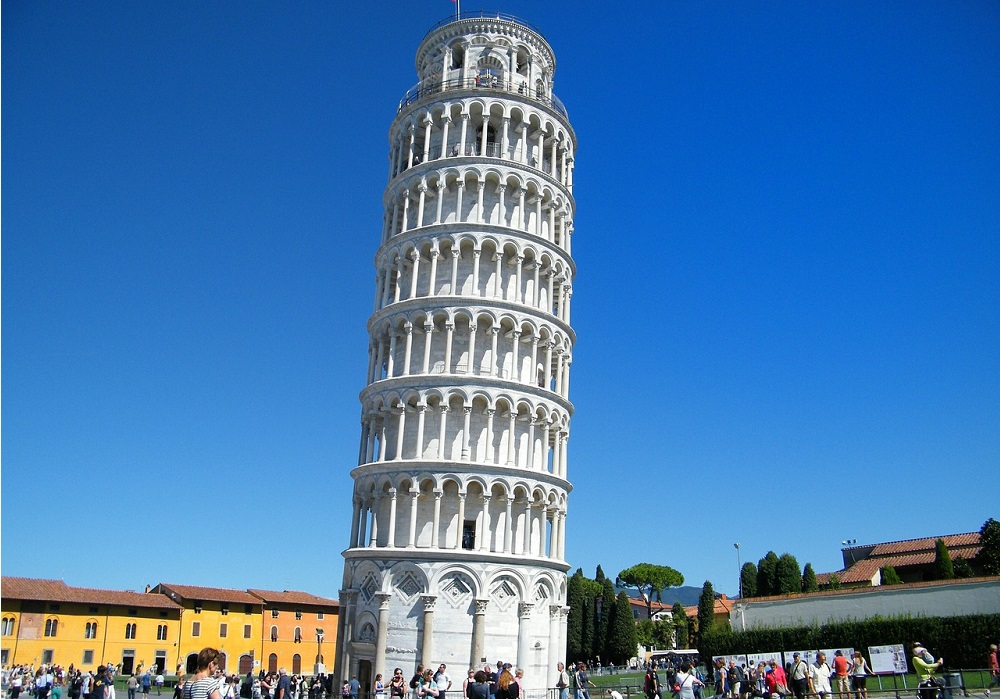
The Leaning Tower of Pisa is famous for, well, it’s tilt. But it has an incredibly interesting history behind it – from the tilt itself, to the different types of stone used. Construction began in 1173 to create the bell tower, and it began to sink after just 5 years, thanks to the 3-meter foundation set in unstable subsoil.
For over a century, construction was halted. This allowed the subsoil to settle more firmly, though thanks to wars and attempts to fix the tilt, it was halted many times after this. In the late 1500s, Galileo tested the tower to try to prove the Law of Free Fall. During WWII, the Allied Troops believed the Germans were using it as an observation post.
Most recently, in 1990, the tower was closed in order to help relieve weight and reduce the tilt by 45 centimeters for safety purposes.
Most Popular Things to See at the Leaning Tower of Pisa:
- Climbing the Tower’s 251 steps
- The Square of Miracles/Duomo Complex
Tips for Visiting the Tower of Pisa:
- Buy Tickets in Advance: Try one of these Tower of Pisa tours from Florence. Tickets are included, but you’ll have a guide to show you all the hidden gems in the tower and around the city.
- Go to the Baptistery for Views: Yes, the Baptistery has some of the most amazing views of the entire square for taking photos!
- Take a Bottle of Water: Even if it’s empty, make sure to bring one! You can easily fill it up at the water fountain.
- Take the Stereotypical “Leaning” Photos: You know you want to! Don’t feel silly, either – people are always there doing it.
Mount Vesuvius and Pompeii
Hours of Operation:
April 1st – October 31st: 9:00 am – 7:00 pm
November 1st – March 31st: 9:00 am – 5:00 pm
Pompeii is famous perhaps because of Mount Vesuvius and the incredible destruction is caused when it erupted, covering the city in almost 20 feet of ash and volcanic debris in 79 CE. Due to the rapid downpour of ash, it essentially preserved the city and the people in it until it was discovered in the 16th-century!
From what did survive, it’s been said that the lifestyle of Pompeii’s citizens were in a class of its own. You can witness some of their creative genius and unrestrained way of living through the frescoes, temples, and other remains on what was once a flourishing resort city.
It’s quite interesting to witness a 2-millenial-old snack bar, or the Thermopolium, where men at work would grab some lunchtime snacks of cheese and honey.
Most Popular Things to See at Pompeii and Mount Vesuvius:
- The Brothel
- The Forum Baths
- The Villa of the Mysteries
- The Forum
- The Stablan Baths
- House of the Small Fountain
- House of the Faun
- Garden of the Fugitives
- The Amphitheater
- Great Palestra
- House of Sallustio
Tips for Visiting Pompeii and Vesuvius:
- Take a Guided Tour: The Mount Vesuvius and Pompeii tours will take you through all the best viewpoints and offer expert background on each site.
- Protect Yourself from the Sun: Summertime is definitely intense with both the heat and sun’s rays, so make sure to dress accordingly.
- Wear Comfortable Shoes: With uneven cobblestone streets, archaeological remains, etc. there’s a lot of walking on rough stone.
Stonehenge
Hours of Operation:
Monday: Closed
Tuesday – Sunday: 9:30 am – 5:00 pm

Legend says that the stone circle of Stonehenge was made by the wizard, Merlin, who used his magic to transport these enormous stones from Ireland, where giants had put them together. However, another legend says Danes put up the stones, while another claims they’re ruins of a Roman temple.
So, which one is right?
The truth is, they are all equally likely to be right (unless you don’t believe in magic)! We aren’t sure who built Stonehenge, but archaeological evidence shows that the first change to the site was made by Mesolithic hunter-gatherers. Since then, it’s been changed by various groups of people.
We also know it took 1,000 years to build and was built 5,000 years ago! The UNESCO World Heritage Site is one of the most impressive prehistoric monuments and the only surviving stone circle in the world – definitely worth visiting! Check out one these Stonehenge tours from London if you’re interested in learning the interesting background and stories
Most Popular Things to See at Stonehenge:
- Stonehenge Exhibition (contains over 250 archaeological finds)
- Neolithic Houses
- Gift Shop
- Café
- Stone Circle
- Visitor Center
Tips for Visiting Stonehenge:
- Figure Out How to Get There: This is yet another reason to book a tour. It may be a popular tourist site, but it’s not exactly easy to get there without a tour!
- Check Out the Visitor Center: Here, you can check out over 250 prehistoric objects, and the Neolithic home.
- Arrive Early: This is a great way to avoid crowds!
Montserrat
Hours of Operation:
Daily from 7:30 am – 8:00 pm
You can expect some amazing views and quite a history lesson around this 1,236-meter-high mountain. The mountain Montserrat with its Benedictine Monastery is simply indescribable, with breathtaking views of the city and Conserolla Mountains. For many, this is a religious pilgrimage, and for others, an opportunity to take in these phenomenal views.
The monastery houses an ancient wooden statue of the Virgin of Montserrat, or their “Black Madonna”. Taking one of these Montserrat tours from Barcelona is amazing, as you can include liquor tastings, visits to wine cellars, and enjoy a guide who’s an expert on the Monastery.
Even if you aren’t religious, you’re sure to appreciate the impressive architecture and spectacular views.
Most Popular Sites to See in Montserrat:
- Abbey of Montserrat/The Black Madonna
- Museum of Montserrat
- Sant Jeroni
- Rack Railway
- Local Market
Tips for Visiting Montserrat:
- Figure Out How to Get There: Of course, it’s easiest to just book a guided tour. However, if you choose not to, you’ll have to decide how you’d like to arrive. You could do train or us, and once you’re there, take the cable far or zip car.
- Dress Warm: Even if weather in Barcelona is somewhat nice, Montserrat can get quite chilly due to the altitude.
- Enjoy Les Vespres: This talented boys’ choir is really something to behold!
- See La Moreneta/The Black Madonna: It’s tradition to kiss or touch her hand holding a sphere while you open the other hand to Jesus.



